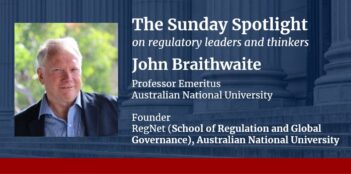
Scholar argues that recent FDA regulations may keep smokers in the dark about e-cigarettes.
Surveys show that the majority of the millions of Americans who smoke want to quit. With cigarette use continuing to be the leading cause of preventable death in the United States, exchanging cigarettes for electronic cigarettes—or e-cigarettes—could go a long way toward reversing this fatal trend.
But one scholar argues that the U.S. Food and Drug Administration’s (FDA) regulations keep smokers from learning about e-cigarettes’ harm-reducing potential.
In a recent paper, Jonathan H. Adler, a professor at Case Western Reserve University School of Law, calls e-cigarettes “the most promising smoking alternative to enter the market to date.” Many varieties of nicotine replacement therapies (NRTs), such as gums and patches, are designed to aid smoking cessation by satiating smokers’ nicotine cravings, but these traditional options have failed to make a significant dent in levels of addiction.
E-cigarettes stand out from other smoking alternatives because they allow users to simulate the smoking experience, addressing a key behavioral component of addiction in addition to delivering nicotine. Unlike traditional cigarettes, though, e-cigarettes neither contain tobacco nor require combustion—the principal sources of exposure to toxic contaminants from normal cigarettes.
FDA has expressed concern that consumers believe cigarette alternatives are safe, thereby leading them to “initiate tobacco product use or to continue using tobacco when they would otherwise quit.” FDA has implemented a new regulatory approach to correct alleged public misconceptions about e-cigarettes’ safety, starting with its 2016 “deeming rule,” which classifies e-cigarettes as tobacco products on the basis that the nicotine in e-cigarettes is “made or derived from tobacco.” By bringing e-cigarettes under the regulatory umbrella of the Tobacco Control Act as newly branded “tobacco products,” FDA has started to clamp down on what safety claims, if any, e-cigarette companies can make.
Adler contends that survey data do not support FDA’s concern about consumer misconceptions. In fact, survey results cited in FDA’s own deeming rule indicate the reverse: Many adult consumers think e-cigarette use is just as harmful, if not more harmful, than smoking tobacco cigarettes. Adler worries that by regulating information-sharing in the e-cigarette industry similarly to the rest of the tobacco industry, FDA may only deepen the misconceptions consumers hold against e-cigarettes as tobacco alternatives.
One such information-targeted regulation curbs e-cigarette producers’ ability to advertise and promote their products. Until recently, robust market competition and innovation have marked the e-cigarette industry because of an abundance of small firms and no consistent dominant players. Adler notes that advertising limits will likely change the industry dynamic, because large tobacco companies such as Altria and Reynolds already have alternative marketing channels in place for promoting e-cigarette subsidiaries. This competitive advantage will benefit the larger companies, “as smaller retailers, such as vape shops, are squeezed by the new rules,” he argues. In addition, removing the incentives for competition in the e-cigarette marketplace could significantly slow innovation in product design.
Perhaps more significantly, FDA intends to extend its oversight beyond the deeming rule by closely monitoring the content of e-cigarette companies’ claims about the potential health risks and benefits of their products. This additional oversight worries Adler. Although he recognizes that e-cigarettes pose some safety concerns—such as possible toxic chemicals in vaping fluid and flavoring, as well as inconsistent nicotine dosages—he argues that even FDA admits that e-cigarettes are likely to be less harmful than traditional tobacco cigarettes. He notes that multiple studies show that e-cigarette vapor contains smaller amounts of toxicants than regular cigarettes.
Adler takes issue with FDA flatly prohibiting e-cigarette companies from making factual claims about a product’s relative risk without first obtaining “FDA approval as a medical drug, device, or combination product,” because these requirements hold true even if the companies simply rehash direct safety statements from the FDA itself.
Manufacturers marketing e-cigarettes as “recreational” products may find the medical product label especially inapt. But FDA insists smoking cessation claims made by companies presenting their products as cigarette alternatives are “more than simply ‘consumer-marketing statements.’” The agency views any cessation claims in a “product’s labeling, promotional claims, and advertising” as implying a product is either intended as a cure or a treatment for nicotine addiction, therefore necessitating FDA approval.
High costs and lengthy waiting periods for FDA approval, of activities such as advertising limits, may squeeze smaller e-cigarette companies out of the market. Adler notes that whether loss of innovation in the tobacco alternative space will be substantial remains to be seen. Still, lack of information and transparency about viable smoking cessation aids when so many lives are lost each year from cigarettes is an immediate concern. Adler warns “over-cautious regulation” can be more damaging than risky products.



